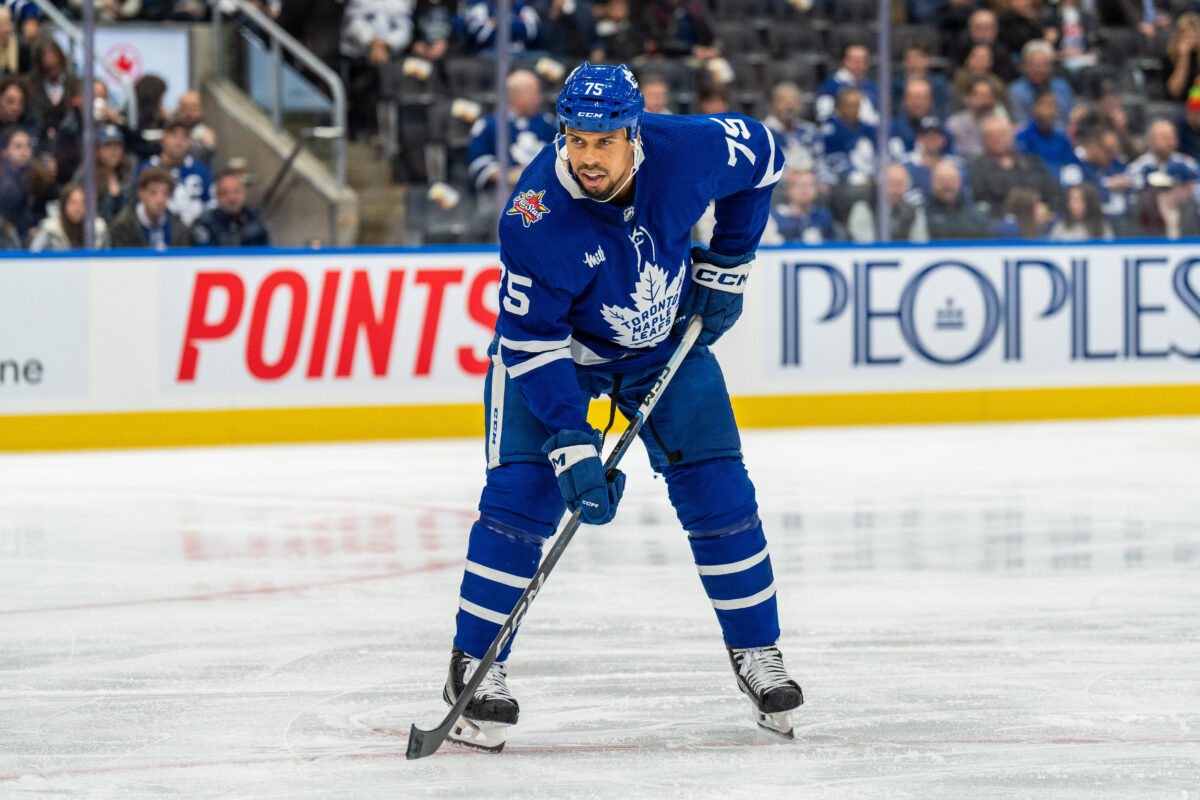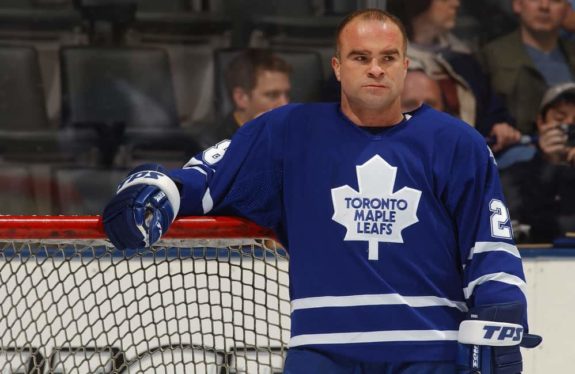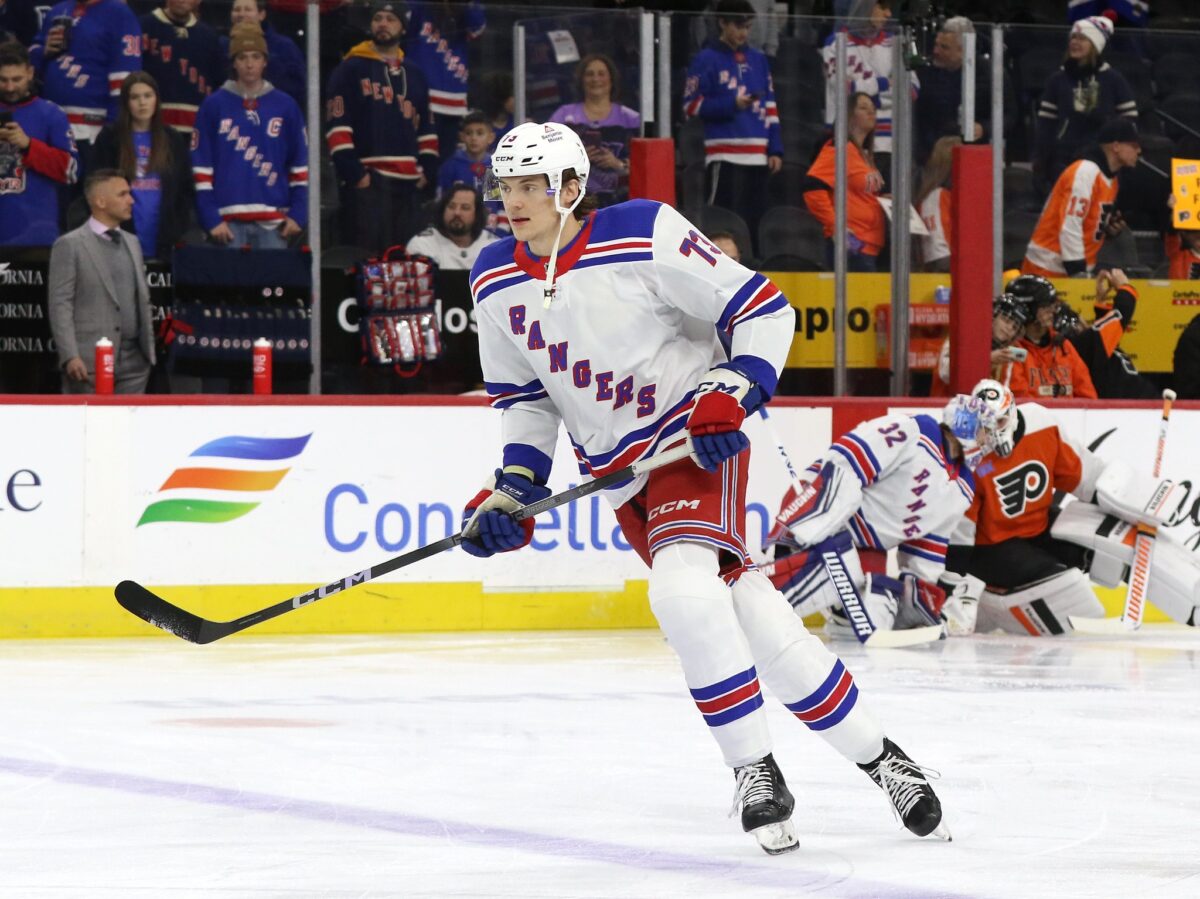Fighting in hockey has been a trending topic since New York Rangers’ forward Matt Rempe made his NHL debut on February 18. He got into a scrap with New York Islanders forward Matt Martin on his very first shift, almost immediately after the puck dropped. Being willing to fight in front of 80,000 fans in an outdoor game is certainly one way to make an impression.
Over his first five games, he has fought three times, taking on Martin, Philadelphia Flyers’ forward Nicolas Deslauriers, followed by Columbus Blue Jackets forward Mathieu Olivier. His fight against Deslauriers on February 24 was likely the most entertaining fight the league has seen in the last few years.
But not everyone has been a fan of the recent spike in fights, pointing out that it’s probably not good for a 21-year-old to fight multiple times in a week. My THW colleague Jacob Billington wrote a piece on February 29 on why the NHL should start the process of outlawing fighting (more on that in a minute). While I appreciate many of the points he made, and I highly recommend you read it before you read the rest of this column, I’m here to point out why that will likely never happen, and whether you like it or not, fighting in the NHL is here to stay.
Rempe vs. Reaves Was a Throwback to Another Time
Part of why I wanted to write this story was because the Rangers and Rempe were in Toronto on March 2 to take on Ryan Reaves and the Maple Leafs. If you’ve been living under a rock for the last 10 years, Reaves is the undisputed heavyweight champion of the NHL, a class of brawlers that’s unmatched throughout the NHL.

For the older hockey fans reading this, you may remember the anticipation that went into a Rangers and Detroit Red Wings game in December 1992. In February of that year, Tie Domi had the upper hand on Bob Probert and proclaimed himself to be the heavyweight champion of the NHL. In December, the much-anticipated rematch at Madison Square Garden turned out to be one of the top-rated fights of all time. To put it in context, a friend of mine’s father is a Red Wings fan and has the New York Post newspaper of that gameday framed in his house, with the two players’ information listed like two boxers ahead of a title fight.
It wasn’t the same circumstances, but the buildup to Reaves vs. Rempe had a lot of that same feeling. In the days leading up to this game, people wondered if the rookie winger would take on the veteran pugilist in Reaves and whether he even had to. His face already bruised from his last fight with Olivier, no one would blame Rempe if he didn’t drop the gloves against the Maple Leafs. But a quick glance to the Rangers bench for permission and a thumbs up was all he needed for these two to go with five minutes left in the game.
The two went for a minute, and each landed some big shots. Despite the reach and multiple jabs (remember, a jab is still a punch), Reaves was able to use his strength and land some blows towards the end. Edge to the veteran, but credit to the rookie who has stood toe-to-toe with four of the toughest players in the NHL in just two weeks.
Some have argued that a 21-year-old shouldn’t be fighting this much, or at all. I’ve listened to plenty of anti-fighting arguments, but a player’s age at the highest professional level is not one of them. This league is full of grown men, fathers, and guys with mortgages. No one is saying Rempe has to fight; he could carve out a spot being a physical forechecker who uses his size to cause turnovers and cycle down low. In every one of these games, he consents to dropping the gloves. He’s the one either initiating it or accepting it. When you’re in the NHL, you’re not a kid but a professional hockey player.
There’s a legitimate debate about how much of an impact he’s had on the Maple Leafs since signing a three-year, $4.05 million deal on July 1. However, you can also make the case he’s looked a lot better in the 12 games he’s played since returning to the lineup on January 27. Where there’s no debate is that he is a prototype of another era. At this time, teams employed at least one, maybe two players whose primary role was to play physically and intimidate.
That era now finds itself bleeding into 2024 with the likes of Reaves and Rempe, who squared up on Hockey Night in Canada. One should understand that both of these players went to bed and woke up with nerves going into their March 2 game, knowing that they would likely cross paths and have to drop the gloves. It could have happened at the beginning of the game or after a goal to spark their respective teams. But in all likelihood, it was going to happen. And no one in the rink got up to get a coffee or turned the channel in their living rooms.
What the Pro-Fighting Crowd Gets Wrong
After reading my colleague’s piece on why the NHL should outlaw fighting, I read the comments. I saw dozens of replies, most questioning the masculinity of the author and whether “he’s actually a fan” and “have you even played the game?” It’s the same thing you would find in the comments on a Facebook post or in the replies on X, formerly known as Twitter.

There’s a level of fandom in hockey that’s toxic, one that yearns for the time when each game had a three-fight minimum, whose favorite player was whoever led the team in penalty minutes, and replies, “Don Cherry’s Rock ‘Em Sock ‘Em” when asked what their favorite movie is. It’s not that they’re just fans of fighting, it’s that they make it their entire personality, that any semblance of preferring a skilled game is tossed aside as soft.
What’s ironic is that they don’t have a damn clue what they’re saying. As someone who’s covered hockey for years, had friends play professionally, and were predominantly fighters, and still thinks it has a place in the game, some of the people who comment on stories like Jacob’s piece have no idea what they’re talking about.
Related: NHL Should Start the Process of Outlawing Fighting
And you know what? The players think you sound stupid, as well. I showed two people who are now retired but fought quite a bit while they played throughout North America the comments on Jacob’s story. One had quite a response, which I’ve edited for clarity. He wishes to remain anonymous, as he has since retired from hockey and now works in the private sector:
None of those people have ever been in a battle. None of them have any idea how f–king scary it is to fight on the ice. We’re the only sport that allows its players to bareknuckle fist-fight … even UFC fighters have to wear padded gloves. The game will always have fighting but the idiots in the comments are the same losers who would cower when faced with any confrontation. Let’s see them be willing to lay their body in front of a 100 mph slap shot. Watch your friend get rag-dolled by someone twice their size then immediately drop your gloves, knowing full well you’re about to get the s–t kicked out of you. Let them try that and tell me how tough they are.
That’s from someone who knows what they’re talking about. You don’t have to pretend to be macho and born with a silver bullet in your mouth to defend fighting’s place in the game.
What the Anti-Fighting Crowd Gets Wrong
This argument goes both ways, like an ace in a deck of cards. While one side sounds like a neanderthal in this discussion, the other can come off as ignorant of the realities of how the game is played. Again, that’s not to justify some of the horrid comments that my colleague received, but there are givens in the sport of hockey at its highest level.

While it’s nearly impossible to quantify a fight’s impact on the game, you can’t argue that it doesn’t affect the fighter’s teammates. When someone wearing the same sweater as you are willing to fight for you, whether in response to a big hit or to motivate a lethargic group, you can’t help but feel motivated.
Maybe you’re reading this and thinking, “Hasn’t the game evolved to a point where skill and speed have replaced truculence and pugnacity?” Yes! It’s true! The game is faster than ever and more skilled than ever, where even fourth-liners and third-pairing defensemen must have some fantastic foot speed to justify a roster spot.
Related: Will Lyubushkin Trade Signal More Maple Leafs Movement?
But this is a sport of egos, of alpha males who see every bit of intimidation and antagonizing as a way to get ahead of your opponent. If an opponent repeatedly crosschecks your teammate, wouldn’t you do something? If someone lays a dirty hit on your linemate, will you have at least a word or two with the one who laid the hit?
Think back to November 2 when the Maple Leafs and Boston Bruins faced off and Brad Marchand slewfoot Timothy Liljegren, causing the Toronto defender to miss two months with a high-ankle sprain. The Maple Leafs responded by not responding, with no one going after Marchand. What happened next was nearly two weeks’ worth of pundits and fans attacking Toronto for lacking intestinal fortitude and how no one on this team stands up for one another.
Do you know who that stands out to the most? It isn’t the reporters or the fans commenting on stories like these; it’s players from around the league. They see a Maple Leafs’ squad that doesn’t stand up for itself or take care of its own. That’s encouragement from the rest of the league to push the boundaries of what’s legal and what isn’t without fear of retribution. “Watch me whack your best player in the ankle; watch me take a run at your 100-point forward. What are you going to do about it?”
That might sound barbaric and outdated, a logic that doesn’t apply as we get deeper into the 21st century. But let’s be honest: nothing about sports makes sense. Grown adults are being paid millions to play children’s games. What about a kid standing up to a bully on the playground? Does it seem out of place?
For Now, Fighting Isn’t Going Anywhere
Perhaps at some point, the NHL will move to hand out game misconducts for a fight instead of a five-minute penalty. Maybe the amount of fights will drop to such a low per-game percentage that it won’t matter. But as long as the game has grown adults with tempers holding weapons and skating at the same speed as a car driving through the neighborhood, there will be fighting.
As Jacob mentioned in his story, there was fighting in the first indoor hockey game played over 100 years ago. Fighting and hockey players, the ultimate trade awaiting its ultimate practitioner. You can say what you want and write whatever column makes you feel better, but you can’t stop what’s coming. Hockey doesn’t wait on you. That’s vanity.
